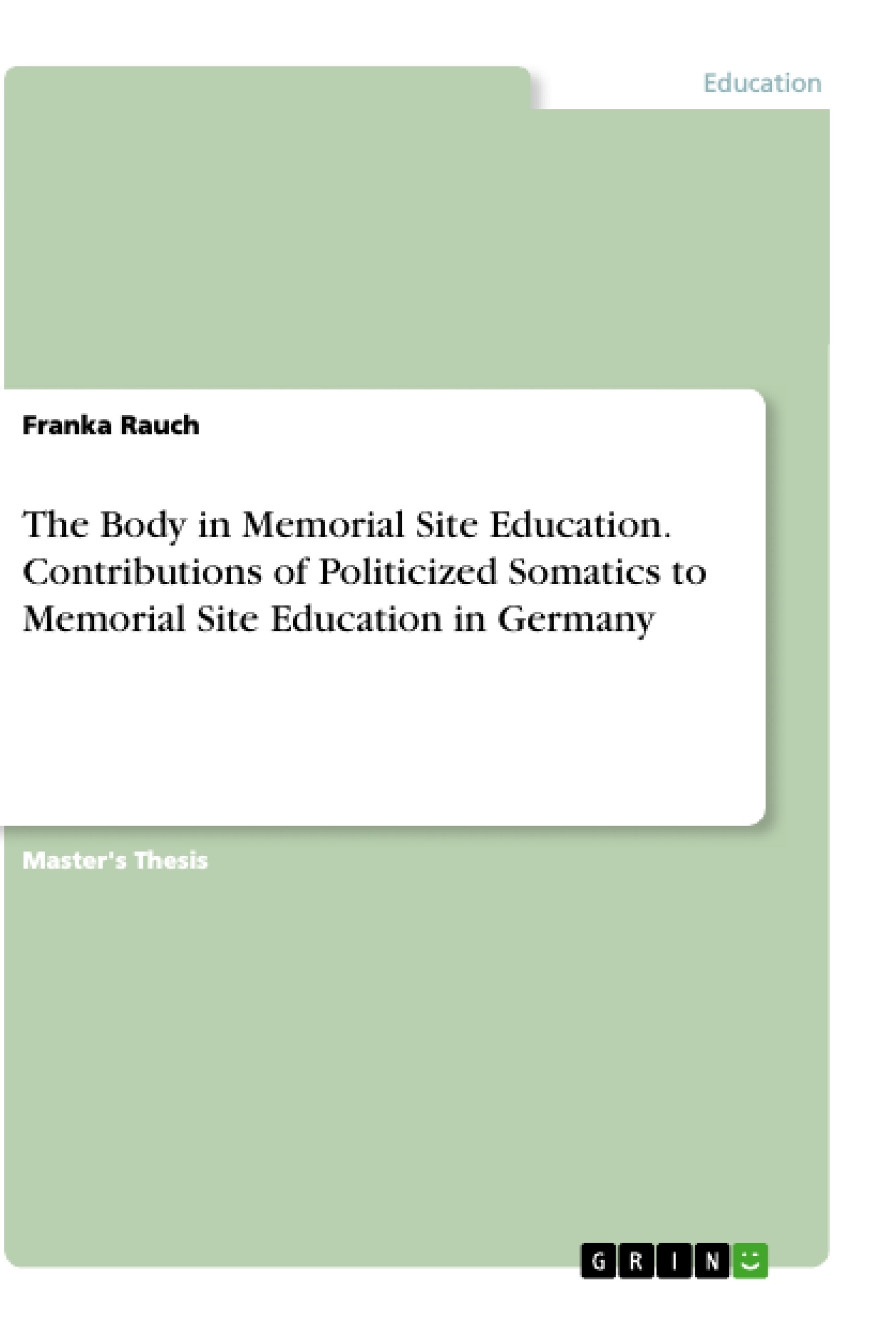This thesis takes a look at the body in memorial site education at former Nazi concentration camps in Germany. On the subtle and not so subtle ways in which bodies are shaped by the Holocaust until today, the ways the body is nevertheless mostly overlooked in memorial site education and the pedagogical implications of recognizing the body in memorial site education. I engage the methodology of politicized somatics in the case study of memorial site education as an example of how Peace and Conflict Studies could recognize the body and somatic dimensions of peace and conflict in general.
The question that this exploration of the body in memorial site education sets out to answer is: how can the perspective of politicized somatics contribute to memorial site education at former Nazi concentration camps in Germany? It is based on the hypothesis that recognizing the body could inform more holistic, multidimensional, and transformative iterations of memorial site education, and memorial culture in general.
Inhaltsverzeichnis (Table of Contents)
- Writing on the land of my ancestry.
- Grounding: the body (in) to Peace and Conflict Studies.
- Searching for the body in PACS.
- Touched by war: explicit bodies in PACS.
- Entryways of the body: implicit bodies in PACS.
- The body entering through the arts in peacebuilding.
- The body entering through the embodied turn in the social sciences.
- The body entering through feminist peace research.
- The body entering through postcolonial and decolonial critique.
- The body in PACS: where to go from here?
- From body to soma: bringing politicized somatics into PACS.
- Somatics.
- Politicized somatics.
- A politicized somatic context analysis: somas at memorial sites.
- The site of Germany: WWII and the Holocaust.
- The site of family: trauma and intergenerational transference.
- The site of community: collective trauma and collective memory.
- The site of institutions: shaping collective memory and memorial sites.
- Memorial site education in Germany.
- The profession of memorial site education.
- The pedagogy of memorial site education.
- Politicized somatic contributions to memorial site education.
- Bringing politicized somatic awareness to existing approaches.
- Integrating politicized somatic elements into existing formats.
- Offering formats based on politicized somatic methodology.
- Walking towards a somatic society of peace.
Zielsetzung und Themenschwerpunkte (Objectives and Key Themes)
This thesis explores the significance of the body in memorial site education at former Nazi concentration camps in Germany, specifically focusing on the impact of the Holocaust on the body. It examines how the body is often overlooked in memorial site education and proposes incorporating the methodology of politicized somatics to address this gap. The research aims to demonstrate how Peace and Conflict Studies (PACS) can benefit from recognizing the somatic dimensions of peace and conflict.
- The role of the body in shaping and being shaped by the Holocaust.
- The limitations of current approaches to memorial site education in recognizing the body.
- The potential of politicized somatics to enhance the pedagogy of memorial site education.
- The broader implications of integrating the body and somatics into Peace and Conflict Studies.
- The significance of Holocaust memorial culture in Germany and beyond.
Zusammenfassung der Kapitel (Chapter Summaries)
The first chapter, “Writing on the land of my ancestry,” introduces the research topic and its personal significance. It establishes the historical context of the Holocaust in Germany and raises questions about how this history shapes individuals. The second chapter delves into the body's presence (or absence) in Peace and Conflict Studies (PACS). It explores various entryways of the body through arts, embodied turn in the social sciences, feminist peace research, postcolonial and decolonial critique, and argues for the importance of including somatic perspectives in PACS. The third chapter investigates the body in memorial site education and analyzes its role in shaping collective memory and trauma. It examines the context of memorial sites in Germany, including the historical significance of Nazi concentration camps, the impact of trauma and intergenerational transference, and the influence of institutions in shaping collective memory. The chapter also discusses the profession and pedagogy of memorial site education in Germany.
Schlüsselwörter (Keywords)
The core themes and concepts explored in this work include memorial site education, the Holocaust, body, somatics, politicized somatics, trauma, collective memory, Peace and Conflict Studies, pedagogy, and Holocaust memorial culture.
- Quote paper
- Franka Rauch (Author), 2020, The Body in Memorial Site Education. Contributions of Politicized Somatics to Memorial Site Education in Germany, Munich, GRIN Verlag, https://www.grin.com/document/1041099



